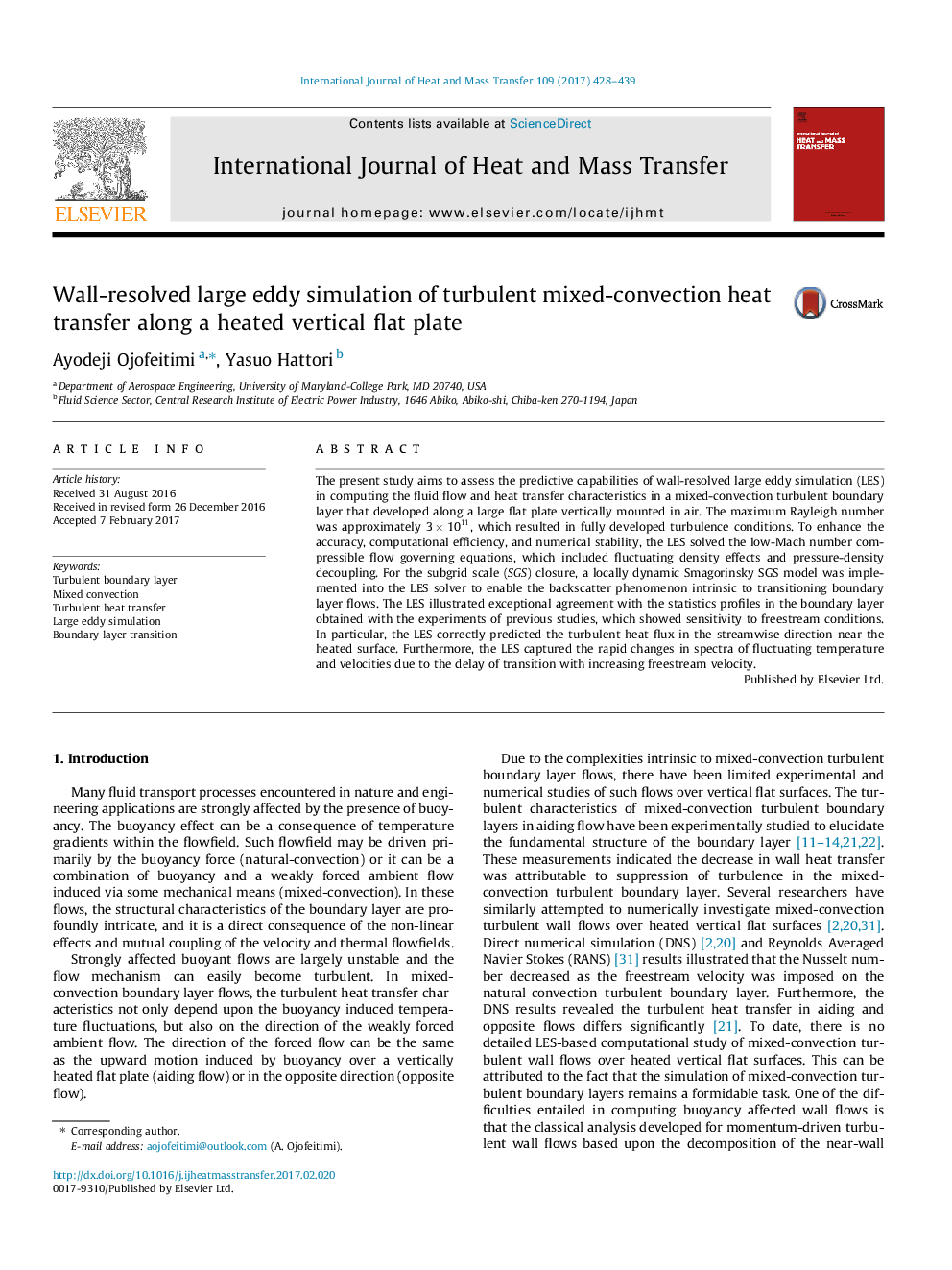| Article ID | Journal | Published Year | Pages | File Type |
|---|---|---|---|---|
| 4994499 | International Journal of Heat and Mass Transfer | 2017 | 12 Pages |
Abstract
The present study aims to assess the predictive capabilities of wall-resolved large eddy simulation (LES) in computing the fluid flow and heat transfer characteristics in a mixed-convection turbulent boundary layer that developed along a large flat plate vertically mounted in air. The maximum Rayleigh number was approximately 3Ã1011, which resulted in fully developed turbulence conditions. To enhance the accuracy, computational efficiency, and numerical stability, the LES solved the low-Mach number compressible flow governing equations, which included fluctuating density effects and pressure-density decoupling. For the subgrid scale (SGS) closure, a locally dynamic Smagorinsky SGS model was implemented into the LES solver to enable the backscatter phenomenon intrinsic to transitioning boundary layer flows. The LES illustrated exceptional agreement with the statistics profiles in the boundary layer obtained with the experiments of previous studies, which showed sensitivity to freestream conditions. In particular, the LES correctly predicted the turbulent heat flux in the streamwise direction near the heated surface. Furthermore, the LES captured the rapid changes in spectra of fluctuating temperature and velocities due to the delay of transition with increasing freestream velocity.
Keywords
Related Topics
Physical Sciences and Engineering
Chemical Engineering
Fluid Flow and Transfer Processes
Authors
Ayodeji Ojofeitimi, Yasuo Hattori,
